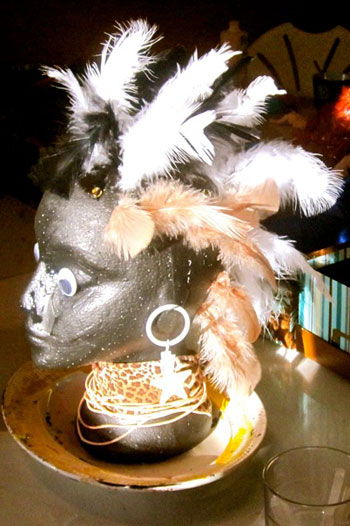
Talk about versatile – Karen Wallace is an art therapist, artist, art instructor, educator and trainer. Karen fits our motto of “inspiring others to create” in more ways than one, which is why we’re proud to showcase her talents as a Featured Art Therapist and Artist!
You can read more about Karen in our fun and informative interview below. Or you can skip right to the gallery where Karen was kind enough to share some great images of archetypes and art journaling, child art therapy work, some client work, and even some of her own wonderful artwork! You can also find Karen online here and here.
1a. Can you give the readers a bio about who you are, where you’re from, what you do, etc?
My name is Karen Wallace and I’m an art therapist, artist, art instructor, educator, and Focusing Trainer. During my early twenties after university, I worked in fashion but after five years left that world with my partner, Patrick and traveled through Europe and North Africa in a VW van for 18 months. We returned to Canada moving to Pender Island in British Columbia and began our back to the land period. We had a market garden selling organic produce, I ran a local gallery and sold my own artwork and the work of many other Island artists. When the traveling urge hit us again, we sold everything that we owned and backpacked through the South Pacific with our children, settling in Brisbane Australia for a while. When we lived on Pender Island I worked in clay, but traded that for mixed media and art journaling so I could work on the road. While in Australia I decided that I wanted to be an Art Therapist. When we returned to Canada moving to Victoria B.C., I returned to school and became an Art Therapist. I worked for several years in Victoria as an Art Therapist in the school system, and privately with people suffering from mental and emotional issues and with special needs. During that time I also I taught Art Journaling and Mixed Media and showed my own work in galleries in Victoria and the Gulf Islands. In 2004 my partner took a position at the University of Regina in Saskatchewan and my son and I soon followed him to the Prairies.
In Regina, I have a private practice with adults and children. I also teach Art Education at the University of Regina showing pre-service teachers how to bring Mixed Media and process art into their classrooms.
1b. Can you talk about your work as an art therapist (what your specific areas of focus are, a typical day/session, etc)?
I don’t have a typical day. Some days I teach, others days I see clients and have a group at night and some days I am giving a workshop or talk. I specialize in trauma work. Some of the people that I work with live with brain injuries, autism, life transitions, depression, abuse issues, body image and family issues. I also facilitate many different kinds of creativity and art therapy groups, for example: The Archetypal Journey, Learning to Love the Body You Have, Claiming Your Ruby Red Slippers, Soul Garden and Honoring the Mother. I teach Focusing and Focused Centered Art Therapy internationally.
2a. Can you describe your thinking/process for a first meeting with a client? Are there specific goals or answers you’re seeking after the initial meeting?
When I first meet a new client I want to hear what they want from our work together. I am trying to a get a sense of whether or not I can be of service to them. I do a short intake; show them the art therapy studio, art materials, painting studio, sand tray area and the talk room. If they like the environment feel that I am a good fit for them, and feel encouraged by what I say about what I can offer them, then we can most likely work together.
2b. What are some of the more successful tools, techniques, and/or activities you have used with clients? Please describe what made them successful.
I combine Art Therapy with many other modalities, but my work is body centered. What I use the most is EMDR, Focusing, Somatic Experiencing and different approaches to talk therapy. I do a lot of Art Journaling with my clients. I practice many forms of play and art therapy. Focusing is working with the felt sense. I teach clients how to access a deeper level inside themselves. It is an integrated somatic and body centered approach used with art making. People gain awareness of the sensations and feelings in their body as they express themselves through art. This process facilitates a deepening of the body/mind connection and allows a richer integration of experiences with the resolution of traumatic or overwhelming events. Somatic psychology links the neurophysiology and psychology with the wisdom of the body as it relates to trauma resolution and the inherent stress of daily living. Through art children and adults can explore and expand on the authentic creative imagery that comes from the bodywork. Through body awareness and creating imagery, children and adults can work towards transforming trauma.
3a. What about Art Therapy made you decide to become an art therapist?
It was a natural progression for me. Being an artist and understanding the healing powers of art for myself, led to wanting to use art and the creative process to work with others. From the time I was very young I have taught: When I was five years of age my students were rows of snowmen. Teaching and facilitating groups has always been a passion of mine.
3b. Can you offer advice for other people that are interested in becoming an art therapist?
They can go online and discover all they need to know about schools. I created my own practice. I have had home businesses and operated a gallery, so creating a private practice was something I am comfortable with. I do contract work for agencies which often results from talks I give, word of mouth or people finding my website. I would say find something unique to offer people, something that makes you stand out. I wrote and designed all my Art Therapy Groups. As far as I know, no one else is doing groups like mine. Also, the way I have combined Art Therapy and Focusing is a unique way of working, derived from years of practicing and working with trauma.
4. Describe yourself in 5 words.
I am creative, complex, compassionate, curious, and passionate.
5. If 3 of your best friends were hanging out with you, what’s one thing they’d all jokingly make fun of you for?
I am always buying new boots.
6. What are you passionate about?
I am passionate about what I can do to help create change in myself and for others. I am passionate about art and working with children
7. Is art, or the process of creating art, therapeutic for you in any way? If so, can you provide a recent example?
Yes. If it wasn’t then I don’t think I could authentically be working in this field. I became an Art Therapist because creating art healed my life. When I process anything, I write poetry, paint, do art journaling and write. I write poetry as part of my reflective and processing work that I do about my clients. Presently, I am creating Archetypal theatres to go with a book that I am finishing on Art Therapy and Archetypes.
8. How has art influenced your perception of life?
It is difficult to tell because I have always viewed the world as an artist. What I think that means is I notice color, patterns, and I touch and smell things. I am deeply moved by nature and arrangements. I visit galleries, go to theatre, read and go to concerts. I work with art, entertain myself through art and relax with art.
9. What are some other things or people that inspire/motivate you?
Seeing amazing art, acts of compassion and kindness, seeing the children and adults I work with grow, change and find joy.
10. Do you believe creativity is an innate quality? Please explain.
The children I work with prove that to me all the time. They live with autism, brain injuries, and other obstacles and they are highly creative in their lives. The world is too complex for humans to not have to be creative.
11. What are some wise words or advice you would like to offer people reading this?
I don’t know. I think people become wise by being Present in their lives, working on increasing their awareness and creating inner and outer peace. I think we all have different ways of doing that. I think living a creative life, meditating and
Trying to live an honest and true life is important.
12. You have been selected to go on an all expenses paid vacation with 3 people you’ve never met (dead or alive). Who is going on vacation with you and where?
Morocco to camp in the desert. Siddhartha, Gloria Steinman and Emily Carr.
SPEED ROUND – Quick questions with quick answers. Ready, go!
What is your favorite food?
Basil
If you could be one animal, which one would you be?
A unicorn.
If you could have one superpower, what would it be?
To heal.
FINAL QUESTION
Where on the world wide web can we learn more about you?
www.islandnet.com/~kwallace
http://arttherapyreflections.blogspot.com/
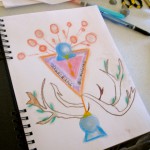
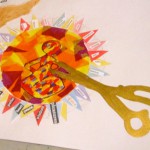
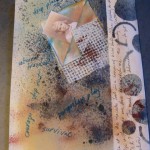
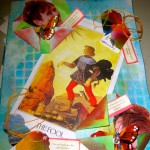

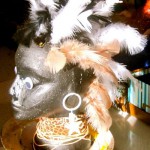
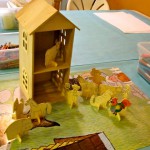
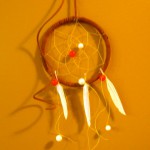
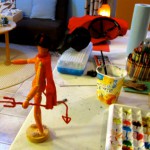
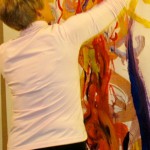
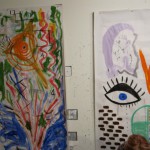
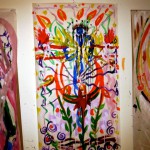
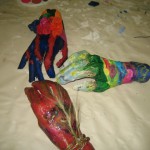
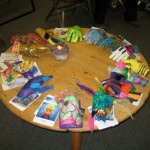
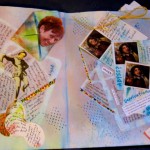
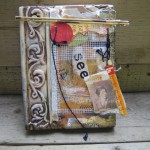
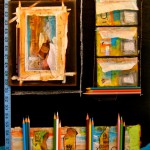
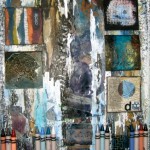
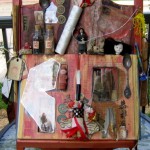
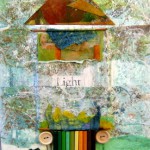
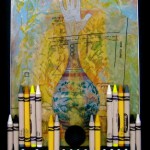
I am enthuised with creating images that relate to stories , songs, poetry, and forming impressions from what has been seen and experienced with the senses. People with special needs express themselves dynamically through exploring line, shape, and form, and experimenting with different mediums. Last year a group formed at one of our local neighbourhood learning centres, and it is so satisfying watching a group of people apply themselves in Art Form, and really very touching to witness joy and contentment being experienced with a person who suffered a Brain injury, watching him draw a horse from imagination, and reflect on childhood images, even though he has short memory loss, to see him slowly use his hands and eye, and participate in group, is so touching. I love watching the hand of the Artist in action, whatever is produced, when it is expressed in the Now, then what else matters! Lovely to read about your Art Therapy notes and quotations and view your Gallery,really like the decorative glove exhibits, and all is so tactile and colourful. Am sure alot of people have developed with Art Therapy and tuition, and it has helped to transform themselves through awareness and resourcing ideas. Art Therapy certainly has helped me as I developed Oesteo Arthritis, and have suffered with fatigue. By applying certain techniques, and exploring images it has become a part of my daily routine, and assisted with expressing Emotions.When once I was struck with muscular spasm,and shock, drawing and painting has been a healing experience. When one begins to heal, then all one wants to do is help other people to experience the Peace and creativity Art offers, and explore the World around us to really see and observe.Yes, Art Therapy really works!
I feel honored to have been featured by you. Thank you so much. Warmly, Karen
Thanks Karen…It’s an honor for us as well!
My name is also Karen Wallace, and I am an art therapist too. From your profile I see we have many other things in common. I just started working again after 10 years as a stay at home mother. My new workplace is quite challenging–many ODD kids. I found myself coming home from work the other day thinking about quiting and getting a job in a flower shop. Thanks for the inspiring interview, it reminded me of why I got into the business.
hello.im Iranian.i search for a art therapist because i like to start art therapy in Iran.help me,pls.